5 Best Email Platforms for Marketers in 2025
Email remains the highest-ROI digital channel, consistently outperforming most paid media for customer retention and repeat revenue. Choosing the right email platform, however, is less about flashy features and more about fit: your list size, channels (email-only vs omnichannel), automation depth, and the tooling your team can actually use. The market stretches from generous free plans designed for side-projects to enterprise suites that orchestrate email, SMS, and app messaging for millions of contacts. Templates, deliverability tooling (SPF/DKIM/DMARC, dedicated IPs), segmentation, and how easy it is to automate matter just as much as sticker price. Below, we compare five credible options—SendPulse (our pick), Salesforce (Marketing Cloud Engagement), UniSender, Sender, and iContact—so you can see where each shines on automation, personalization, templates, validators, deliverability aids, CRM, and overall value.
SendPulse
SendPulse is an omnichannel marketing platform built to help small and midsize teams do serious automation without an enterprise budget or headcount. Beyond email, it natively supports SMS, Viber, web push, and chatbots (WhatsApp, Facebook Messenger, Instagram, Telegram), letting you orchestrate journeys across channels from one place. Its CRM keeps contacts, deals, and pipelines close to your campaigns so marketing and sales aren’t living in separate tools.
The headline here is Automation 360—a visual, multi-step builder for welcome/onboarding, cart recovery, re-engagement, and complex branching sequences. Send-time performance is boosted by AI-powered “Perfect Timing” (send-time optimization), which analyzes engagement history to deliver when each subscriber is most likely to open. Building is fast thanks to free, mobile-responsive templates and a no-code editor; the public gallery explicitly states that all templates are responsive. Deliverability is supported with sender authentication (SPF/DKIM/DMARC) and a built-in email verification tool to keep lists clean and bounce rates low. There is also a landing page, website pop-ups, and a subscription form builder that will help with lead generation.
Pricing & free plan. The free plan is generous, offering 15,000 emails per month to 500 subscribers, making it ideal for a serious pilot or a small newsletter. Paid plans cost around $8/month for 500 contacts (billing and regions affect the exact figure). That value-for-money is uncommon in tools that also include true omnichannel and advanced automation.
Who it’s best for. SMBs and lean teams seeking enterprise-like automation and channels without the friction of enterprise, as well as anyone looking for a validator, templates, and automation out of the box. Compared to enterprise suites, you’ll trade some ultra-granular data modeling, but for most marketers, SendPulse hits the sweet spot of affordability, usability, and depth.
Elastic Email
Elastic Email is a flexible email marketing and delivery platform that appeals to both marketers and developers. Founded in 2010, it started as a low-cost bulk email sending service and has since evolved into a full-featured platform with campaign tools, automation, and API-based delivery. Its biggest draw is affordability: Elastic Email consistently offers some of the most competitive pricing in the industry while still packing in a robust feature set.
Elastic Email combines a drag-and-drop campaign editor, a template gallery, and contact management with tags, segments, and advanced filtering. On top of marketing campaigns, it provides transactional email delivery via API or SMTP, making it suitable for product teams and SaaS businesses that need reliable infrastructure. Automation features allow you to create drip campaigns, event-based triggers, and autoresponders, while personalization tools ensure tailored messaging. The platform also includes deliverability-focused tools like list verification, reputation monitoring, and dedicated IPs.
Pricing & free plan. Elastic Email offers a free plan with 100 emails per day, which is useful for testing but limited for real campaigns. Paid plans for email marketing start at $29 monthly for up to 2,500 contacts and 37,500 emails.
Who it’s best for. Elastic Email is an excellent fit for small businesses, developers, and startups that need a powerful yet inexpensive way to manage both marketing and transactional email. Its scalability and API strength make it especially appealing for SaaS and product-led companies.
Mailchimp
Mailchimp is one of the world’s most recognized email marketing platforms, widely used by startups, small businesses, and creators. Founded in 2001, it grew from a side project into a household name for email campaigns thanks to its approachable design, generous free plan, and constant expansion into broader marketing services. In 2021, Intuit acquired Mailchimp, integrating it with QuickBooks and further cementing its position as a go-to platform for SMBs.
Mailchimp offers a drag-and-drop email builder, a large template library, and user-friendly audience management tools. Automation is available for essential use cases like welcome emails, abandoned cart reminders, re-engagement campaigns, and behavior-based triggers. It also includes basic CRM features such as contact profiles and tags, plus integrations with eCommerce platforms like Shopify and WooCommerce. For personalization, Mailchimp supports dynamic content blocks, merge tags, and segmentation based on subscriber behavior. Paid tiers unlock more advanced functionality, such as multivariate testing, send-time optimization, and advanced reporting.
Pricing & free plan. Mailchimp’s Free plan supports up to 500 contacts and 1,000 monthly email sends, with basic templates and limited automation. Its Essentials plan starts at around $10-13/month for up to 500 contacts, giving access to more templates, A/B testing, and 24/7 support. Higher tiers (Standard and Premium) expand automation depth, segmentation power, and advanced analytics.
Who it’s best for. Mailchimp is a strong choice for small businesses, startups, and solo creators who need a beginner-friendly platform with a polished editor, reliable deliverability, and an ecosystem of integrations. It’s ideal for teams that want to get campaigns running quickly without a steep learning curve. However, its pricing can scale quickly as your list grows, and advanced automation is more limited compared to SendPulse or Salesforce, making it better suited for early-stage growth than for long-term omnichannel complexity.
Mailmodo
Mailmodo is an AI-powered email marketing software that helps you create, automate, and optimize campaigns effortlessly. From planning strategy to writing copy and building journeys, Mailmodo’s AI Agents handle it all, no technical expertise needed. It’s the fastest way to send smart, interactive, and high-performing emails.
Mailmodo offers a comprehensive suite of AI-powered tools designed to simplify and elevate email marketing. Its AI Email Assistant helps you plan campaigns, craft subject lines, and generate contextual copy with ease, just by chatting with Mailmodo’s AI Agents. The AI-Powered Email Builder lets you design polished, on-brand emails in seconds, whether you’re creating layouts from scratch or refining existing ones. With a Drag-and-Drop Editor, you can customize every element visually and preview designs live for consistency and quality.
Automation is made simple through Smart Email Automation, where AI-suggested workflows, pre-filled templates, and editable triggers help you set up entire customer journeys effortlessly. To ensure maximum reach, Mailmodo’s Email Deliverability system enhances sender reputation and keeps your messages out of spam folders.
Pricing & Free Plan:
Mailmodo’s free plan is quite generous, allowing you to send up to 5,000 emails per month to 1,000 contacts, making it perfect for small businesses or those testing advanced email marketing features. Paid plans start at $39/month (Starter), scaling to $79/month (Pro) and $144/month (Expert), depending on your contact volume and requirements. Considering its interactive emails, automation, and AI-powered tools, Mailmodo offers excellent value for money compared to most platforms in its category.
Who It’s Best For
Mailmodo is best for businesses and marketing teams that want AI-powered email marketing. It’s ideal for SMBs and startups looking to automate campaign creation, generate copy, and optimize workflows with minimal manual effort. Teams that want to plan strategies, craft subject lines, and launch effective campaigns quickly will benefit most from Mailmodo’s AI-driven tools, which combine efficiency, ease of use, and advanced functionality.
Sender (Sender.net)
Sender focuses on giving small teams the core stack—campaigns, automation, forms/landing pages, and simple SMS—in a clean UI with a famously generous free plan. It’s built for speed to value: import a list, grab a template, set a flow, and ship.
Expect automation (including splits), basic segmentation, pop-ups/landing pages, and a template editor that’s easy to master. Documentation emphasizes quick setup and monthly vs annual billing options, with clear email credit allocations per tier. Deliverability essentials (SPF/DKIM setup, shared → dedicated IPs on higher tiers) are available; if you need inboxing heavy-lifting, pair with good list hygiene.
Pricing & free plan. The Free Forever plan covers up to 2,500 subscribers and 15,000 emails/month—one of the most generous in its class. Entry paid tiers typically start around $7–$10/month, depending on subscriber count and billing.
Who it’s best for. Startups, creators, and micro-teams seeking no-friction email, basic SMS, and usable automation without the cost anxiety. If you later need omnichannel depth or built-in verification, you may outgrow it—but that generous free tier makes it an easy place to start.
iContact
iContact is an approachable email platform aimed at small businesses and nonprofits that prize simplicity and support over bells and whistles. It’s been around for years with a reputation for hand-holding and straightforward templates.
You get a drag-and-drop editor, a template library, list management with tags/segments, basic autoresponders, and analytics. It’s less about hyper-granular journey building and more about helping small teams send reliably and stay organized.
Pricing & trial. iContact offers a 30-day free trial and entry pricing around $9/month for the base plan, with upgrades for more contacts and features.
Who it’s best for. SMBs that want a friendly, support-driven email tool and don’t need complex omnichannel journeys or advanced AI. If your roadmap includes sophisticated automation.
beehiiv
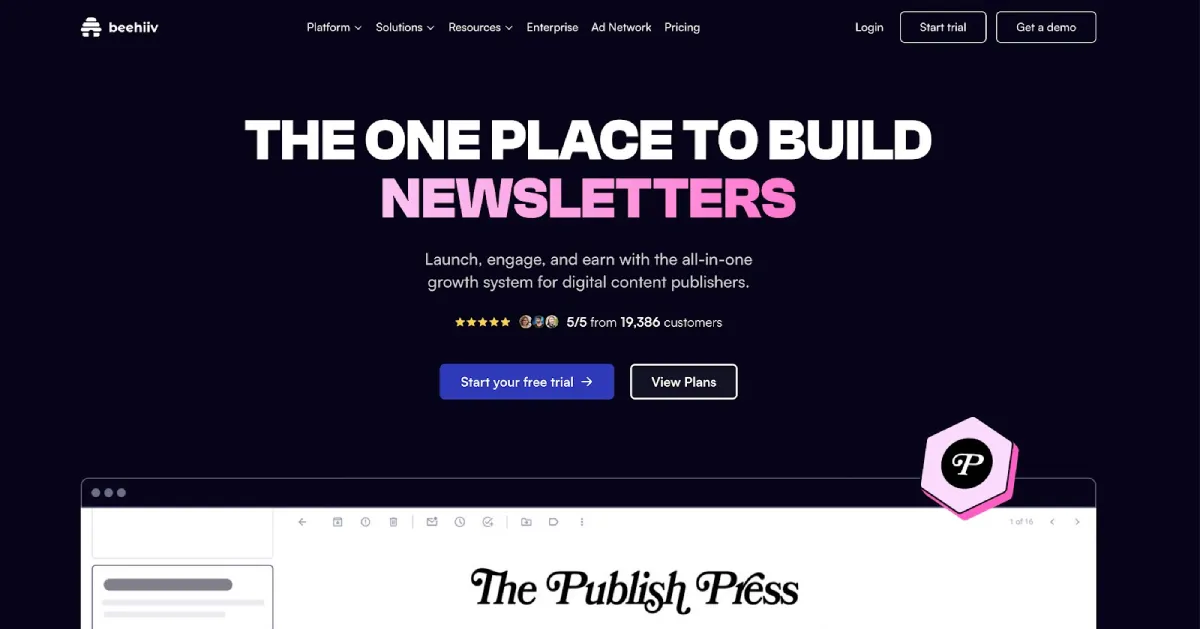
beehiiv offers an intuitive drag-and-drop editor. Its advanced segmentation engine supports behavioral, demographic, and custom-field targeting, while automation covers essential flows like onboarding, drip campaigns, and win-backs. One unique edge is its native monetization ecosystem: referral programs, audience polls, and an ad network that connects publishers with sponsors directly inside the platform. Deliverability is reinforced with SPF/DKIM/DMARC authentication, sender reputation monitoring, and dedicated IPs for larger senders.
Pricing & free plan. beehiiv’s Free plan includes up to 2,500 subscribers with unlimited sends, landing pages, and forms—generous for new creators. Paid plans start at $42/month, unlocking premium features like advanced automation, custom domains, surveys, and monetization tools. Higher tiers add API access, dedicated deliverability support, and enterprise-grade analytics.
Who it’s best for. beehiiv is ideal for newsletter-first businesses, media brands, and creators who want more than just an email sender. Its built-in growth and monetization toolkit gives it an edge over legacy ESPs, while its pricing and usability make it accessible to both solo operators and scaling teams. If your strategy is centered on growing and monetizing a newsletter audience, beehiiv is built with you in mind.
Bottom line
After comparing SendPulse, Elastic Email, Mailchimp, Sender, and iContact, one thing becomes clear: SendPulse offers the best balance of affordability, advanced features, and usability.
Unlike Elastic Email, which is powerful but costly and complex, SendPulse gives SMBs enterprise-like automation (Automation 360) at a fraction of the price. While Mailchimp remains beginner-friendly, its free plan is restrictive, and paid tiers scale quickly in cost—whereas SendPulse’s free 15,000 emails/month and low entry pricing make it accessible for growing businesses. Sender and iContact serve as simple, budget tools but lack the depth of AI-driven “Perfect Timing,” omnichannel campaigns (email, SMS, Viber, web push, chatbots), and a built-in email validator that SendPulse includes out of the box.
SendPulse is also unique in giving teams a complete omnichannel suite and a CRM, all in one platform. This means marketers can create seamless customer journeys across email, SMS, and chatbots—without juggling multiple tools. Add to that the free responsive templates, the integrated email verification system (which protects deliverability and ROI), and the fact that it’s designed to be intuitive for small teams but scalable for larger ones, and you get unmatched value.
If you want the most well-rounded email marketing platform in 2025—one that’s powerful yet affordable, simple yet advanced, and built for growth—the clear winner is SendPulse. It not only competes with enterprise tools but also makes automation, personalization, and omnichannel marketing achievable for businesses of any size.
As businesses continue to optimize their marketing strategies, email remains one of the most powerful channels for nurturing leads and driving conversions. The right email marketing tools not only streamline campaigns but also help brands deliver more personalized experiences. And as marketing evolves, many companies are also exploring AI-driven solutions to enhance customer engagement beyond the inbox. If you’re interested in complementing your email efforts with conversational technology, check out this guide to the best AI chatbots that can take your customer interactions to the next level.

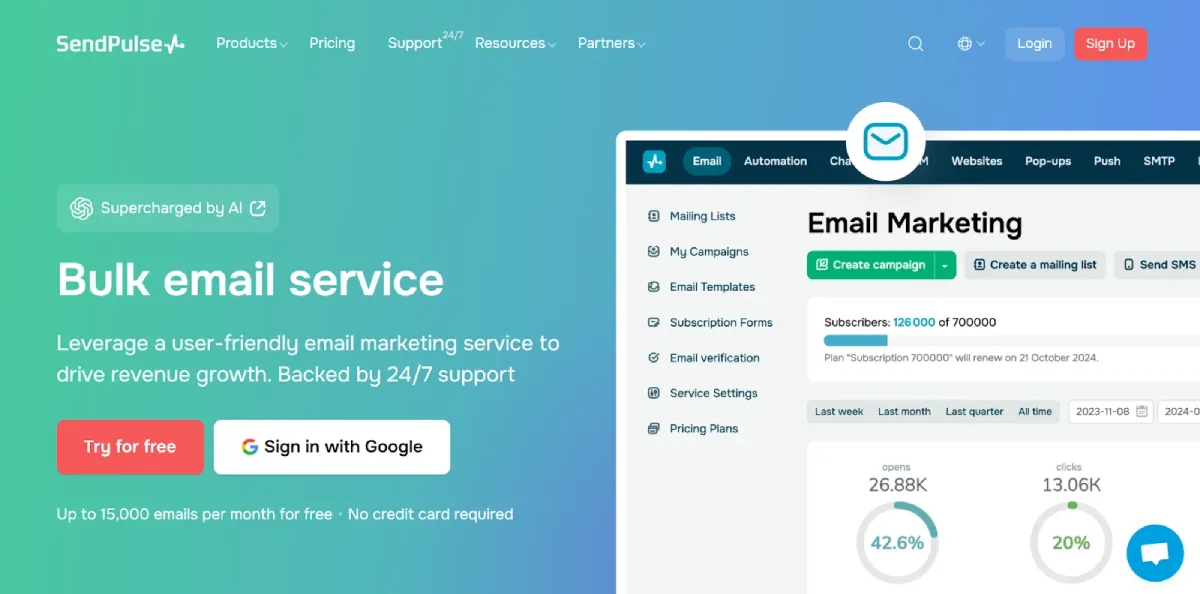
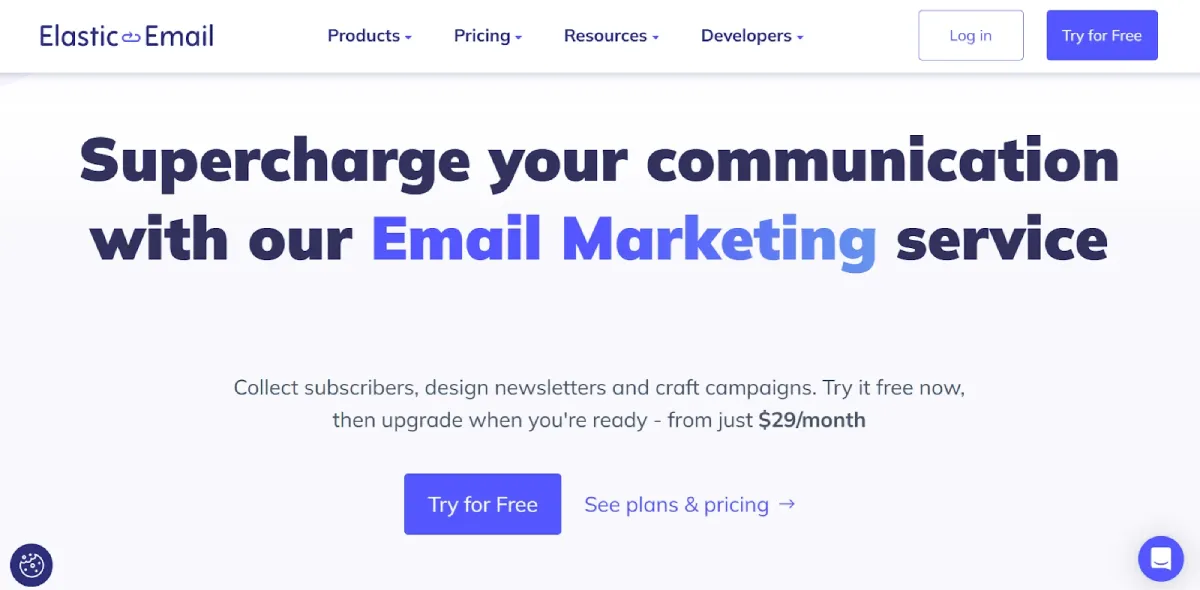
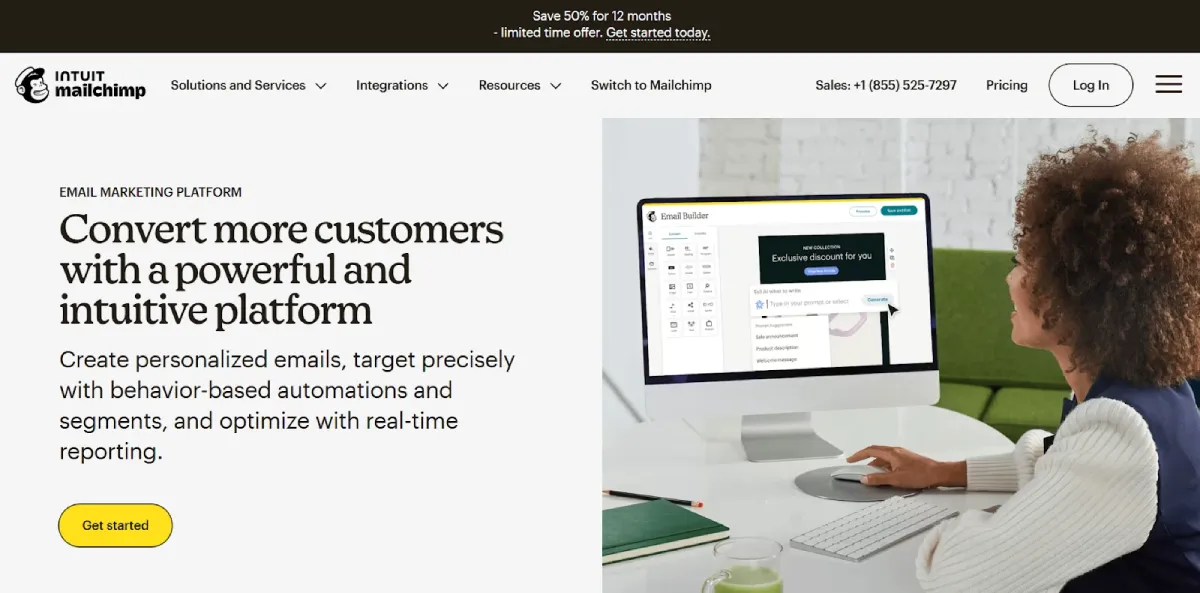
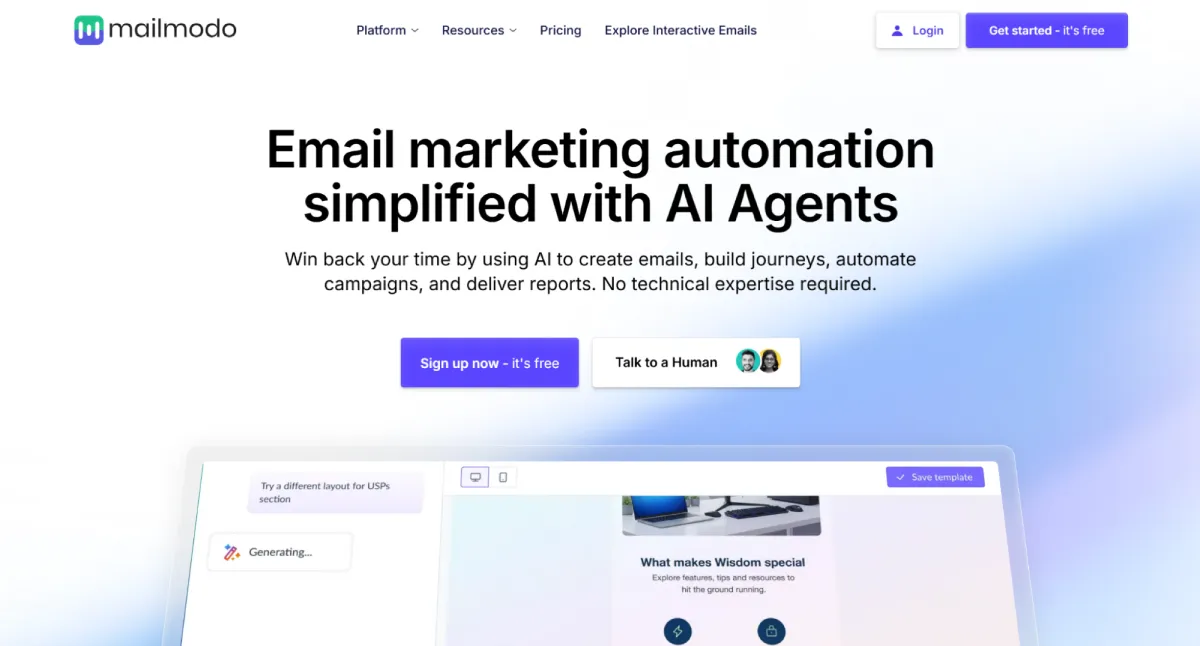


Leave a Reply